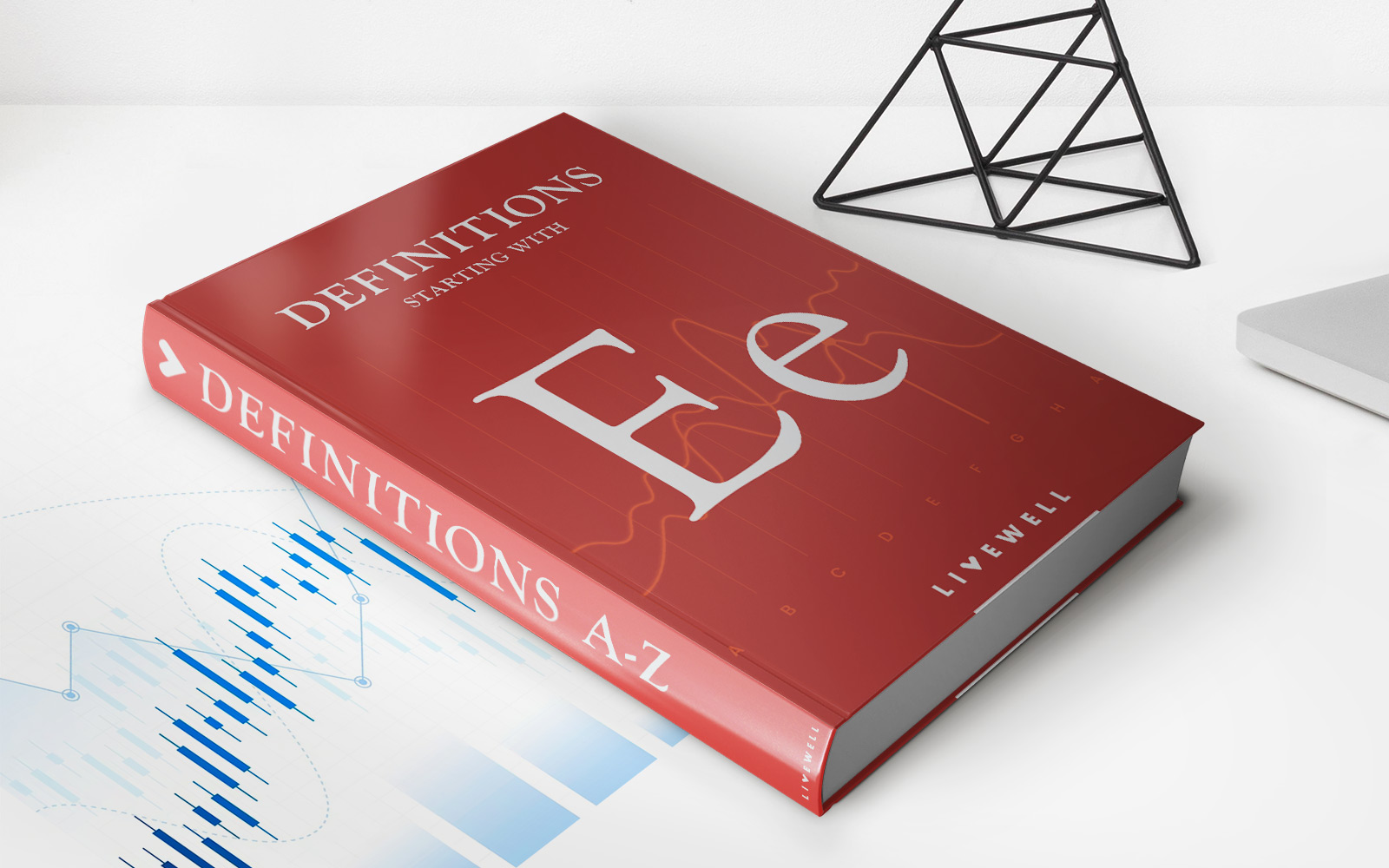

Finance
What Is LIFO In Accounting
Published: October 8, 2023
Learn the basics of LIFO in accounting and how it impacts financial statements. Understand the key concepts and significance of this finance practice.
(Many of the links in this article redirect to a specific reviewed product. Your purchase of these products through affiliate links helps to generate commission for LiveWell, at no extra cost. Learn more)
Table of Contents
Introduction
Accounting is a crucial aspect of any business, as it allows companies to track their financial transactions and make informed decisions. One important concept in accounting is the method of valuing inventory, which can have a significant impact on a company’s financial statements. One commonly used inventory valuation method is LIFO, which stands for Last-In, First-Out.
LIFO is a method that assumes that the most recent inventory purchased or produced is the first to be sold. This means that the cost of goods sold (COGS) is calculated using the cost of the most recent inventory, while the older inventory costs are left in the inventory account. Understanding how LIFO works and its implications is essential for businesses, as it can affect their profitability, tax obligations, and financial reporting.
By using LIFO, companies can have a more accurate representation of their current inventory value, considering that the most recently acquired inventory is generally valued at higher costs. This method is particularly useful in industries where the prices of goods tend to rise over time. However, it is important to note that LIFO is not universally accepted by all countries and regulatory bodies, and has its advantages and disadvantages.
Definition of LIFO
Last-In, First-Out (LIFO) is an inventory valuation method where the assumption is made that the most recently acquired inventory is the first to be sold. In other words, under LIFO, the cost of goods sold (COGS) is calculated using the cost of the most recently purchased or produced inventory, while the older inventory costs are left in the inventory account.
Using the LIFO method, it is assumed that inventory purchased or produced at a later date has a higher cost due to inflation or other factors. Consequently, when the inventory is sold, the COGS is calculated using the higher cost of the most recent inventory. This leads to a situation where the remaining inventory on the balance sheet is valued at a cost lower than the current market price for those goods.
LIFO is based on the principle that the cost of goods sold should reflect the most recent costs incurred by the company. This has the effect of matching the current cost of inventory with the revenue generated from its sale. By valuing inventory using LIFO, companies can estimate the cost of goods sold at a higher cost, leading to a lower taxable income and potentially reducing their tax liability.
It is important to note that LIFO is not a universally accepted accounting method. While it is widely used in certain industries, such as the retail sector, it may not be allowed or preferred in some countries or under certain accounting standards. Alternative methods, such as First-In, First-Out (FIFO) or average cost methods, may be used depending on the jurisdiction and regulatory requirements.
How LIFO Works
Understanding how LIFO works is essential to comprehend its impact on a company’s financial statements and inventory valuation. LIFO operates on the principle that the most recently acquired or produced inventory is the first to be sold. Let’s walk through a simplified example to illustrate the process:
-
Inventory Purchases: A company purchases 100 units of a product at a cost of $10 each on January 1st, and another 100 units at a cost of $12 each on February 1st. The total cost of these purchases is $2,200.
-
Inventory Sold: During the month of February, the company sells 150 units of the product.
-
COGS Calculation: Under LIFO, the cost of goods sold is calculated using the cost of the most recent inventory. In this case, the cost of the 100 units purchased on February 1st is used first, as they are the most recent. Therefore, the COGS is 100 units * $12 each = $1,200.
-
Remaining Inventory: Since only 100 units were sold, 50 units from the January 1st purchase are still in the inventory account. The value of this remaining inventory is based on the cost of the oldest purchased units, which is $10 per unit. Therefore, the remaining inventory value is 50 units * $10 each = $500.
As illustrated in the example, LIFO assumes that the most recently acquired inventory is the first to be sold, resulting in a higher cost of goods sold and a lower remaining inventory value on the balance sheet. This can impact financial ratios, such as gross profit margin and inventory turnover, and affect a company’s profitability and liquidity analysis.
It is important for businesses to keep accurate records of inventory transactions and implement a robust inventory management system to ensure the proper application of the LIFO method.
Advantages of Using LIFO
Using the Last-In, First-Out (LIFO) inventory valuation method offers several advantages for businesses. Let’s explore some of the key benefits:
-
Cost Matching: LIFO helps in matching the current cost of goods sold (COGS) with the revenue generated from their sale. By assuming that the most recent inventory is sold first, LIFO reflects the current market value of goods more accurately, especially in industries where prices tend to increase over time. This provides a more realistic representation of cost of sales, which can aid in making informed pricing decisions and assessing profitability.
-
Tax Impact: LIFO often results in lower taxable income, as it values the cost of goods sold at a higher cost. When prices are rising, using the higher recent costs reduces the profit margin and, consequently, the taxable income. This can help companies reduce their tax liability and generate cash flow benefits, particularly during periods of inflation.
-
Inventory Management: Implementing LIFO requires businesses to maintain proper inventory tracking systems. This can lead to improved inventory management practices, such as better tracking of stock levels, identifying slow-moving or obsolete inventory, and managing inventory turnover effectively. LIFO can aid in reducing holding costs and optimizing inventory control, ensuring that inventory levels are aligned with market demand.
-
Financial Statement Presentation: LIFO can provide financial statements that reflect more current costs and market values. This can be beneficial for companies operating in industries with significant price fluctuations, as it presents a more accurate picture of the cost of sales and inventory value. These financial statements can be useful for investors, creditors, and stakeholders in assessing the financial health and performance of the company.
It’s important to note that while LIFO offers advantages, it may not be suitable for all businesses or allowed in all jurisdictions. Companies should consider their specific circumstances, industry dynamics, and accounting regulations before deciding to use LIFO as their inventory valuation method.
Disadvantages of Using LIFO
While the Last-In, First-Out (LIFO) inventory valuation method has its advantages, it also comes with several disadvantages that businesses need to consider:
-
Inventory Valuation: One major drawback of LIFO is that it can result in an understatement of the value of a company’s inventory on the balance sheet. Since older inventory costs are left in the inventory account under LIFO, the value of the remaining inventory may not represent its current market value. This can lead to distorted financial ratios, such as lower working capital and asset values, which may affect the perception of the company’s financial health by investors and lenders.
-
Lower Profit Margins: Using LIFO can lead to lower reported profits compared to other inventory valuation methods. This is because LIFO assigns the higher costs of the most recent inventory to the cost of goods sold (COGS), resulting in a smaller gross profit. Lower profit margins may impact the perception of a company’s performance and affect its ability to attract investors and secure financing.
-
Financial Statement Comparability: LIFO can hinder the comparability of financial statements between different companies or periods. Due to the potential distortion of inventory valuations, comparing financial statements of companies that use LIFO with those that use other inventory valuation methods like First-In, First-Out (FIFO) becomes challenging. Similarly, comparing financial statements across different accounting periods within the same company can be complicated due to valuation differences.
-
Higher Tax Burden: While LIFO can provide tax advantages in periods of inflation, it can lead to a higher tax burden in times of deflation or stable prices. When prices are declining, LIFO assigns lower costs to the COGS, resulting in higher profits. This, in turn, increases the taxable income, potentially negating the tax benefits realized during inflationary periods.
It’s essential for businesses to carefully evaluate the disadvantages of LIFO and consider their specific industry dynamics, financial reporting needs, and tax implications before opting to use this inventory valuation method. Consulting with accounting professionals or experts is advisable to make an informed decision that aligns with the company’s goals and regulatory requirements.
LIFO vs FIFO
When it comes to inventory valuation, two popular methods are Last-In, First-Out (LIFO) and First-In, First-Out (FIFO). Let’s compare the two methods:
LIFO:
-
Assumes that the most recently acquired inventory is sold first.
-
Results in a higher cost of goods sold (COGS) and a lower remaining inventory value on the balance sheet.
-
May lead to lower reported profits due to higher COGS.
-
Can provide tax advantages during periods of inflation by reducing taxable income.
-
May result in an understatement of inventory value and distort financial ratios.
FIFO:
-
Assumes that the oldest inventory is sold first.
-
Results in a lower COGS and a higher remaining inventory value on the balance sheet.
-
May lead to higher reported profits due to lower COGS.
-
Provides a better reflection of actual inventory value but may not always reflect current market costs.
-
No specific tax advantages or disadvantages, as COGS reflects the actual cost of the oldest inventory.
The choice between LIFO and FIFO depends on various factors, including industry dynamics, inflation rate, financial reporting requirements, and tax implications. Some considerations include:
-
Industry: LIFO is commonly used in industries where prices of goods tend to rise, such as retail or manufacturing. FIFO is often preferred in industries with perishable goods or where prices are more stable, like food or pharmaceuticals.
-
Financial Reporting: FIFO provides a better representation of the remaining inventory’s value on the balance sheet, reflecting the cost of the oldest inventory. LIFO, on the other hand, may lead to an understatement of inventory value and distort financial ratios.
-
Tax Implications: LIFO can provide tax advantages during inflationary periods by reducing taxable income. FIFO does not provide specific tax advantages or disadvantages as it reflects the actual cost of goods sold.
Ultimately, the choice between LIFO and FIFO depends on the company’s specific circumstances and objectives. Businesses should carefully evaluate their industry, financial reporting needs, and tax implications before deciding which method to use for inventory valuation. Consulting with accounting professionals or experts can provide valuable insights in making the right decision.
LIFO in Accounting Practice
LIFO, or Last-In, First-Out, is a widely used inventory valuation method in accounting practice, particularly in industries where prices tend to rise over time. Let’s explore how LIFO is implemented and applied in accounting:
Inventory Tracking:
Implementing LIFO requires accurate inventory tracking systems to record and monitor the quantity and cost of inventory. Businesses need to keep detailed records of inventory purchases, sales, and returns to calculate the cost of goods sold (COGS) and determine the remaining inventory value accurately.
Periodic and Perpetual LIFO:
There are two primary methods of applying LIFO: periodic and perpetual. In periodic LIFO, the cost of goods sold is calculated periodically, usually at the end of the accounting period, based on the cost of the most recent inventory purchases. In perpetual LIFO, the cost of goods sold is calculated in real-time for each inventory transaction using the most recently acquired inventory costs.
Cost Flow Assumptions:
LIFO assumes that the most recently purchased or produced inventory is the first to be sold. This is based on the concept that older inventory costs may no longer reflect the current market value due to inflation or other factors. By applying this assumption, the COGS consists of the cost of the most recent inventory purchases, while the remaining inventory on the balance sheet is valued using the cost of older inventory.
Tax Considerations:
LIFO can have tax implications for businesses, particularly in countries where it is allowed. During periods of inflation, the higher cost of goods sold under LIFO may result in lower taxable income, leading to reduced tax liability. However, it’s important to note that governments have specific rules and limitations regarding the use of LIFO for tax purposes.
Disclosure and Compliance:
Companies utilizing LIFO for inventory valuation are required to disclose their use of this method in their financial statements. They need to provide detailed information about the impact of LIFO on financial ratios, as well as any changes in the LIFO reserve, which represents the difference between the value of inventory under LIFO and another inventory valuation method like FIFO.
It’s important for businesses to understand the accounting and reporting requirements for LIFO and ensure compliance with relevant accounting standards and regulations. Working closely with accounting professionals or consultants can help navigate the complexities of LIFO implementation and ensure accurate financial reporting.
Examples of LIFO Accounting
To illustrate how Last-In, First-Out (LIFO) accounting is applied, let’s consider a few examples:
Example 1: Retail Store
A retail store purchases 100 units of a product at a cost of $10 each on January 1st and another 100 units at a cost of $12 each on February 1st. During the month of February, the store sells 150 units of the product.
Using LIFO accounting, the cost of goods sold (COGS) is calculated based on the most recent inventory costs. In this case, since the 150 units were sold, the COGS is calculated using the cost of the 100 units purchased on February 1st. Therefore, the COGS would be 100 units * $12 each = $1,200.
The remaining inventory value is determined by the cost of the older inventory. In this example, there are 50 units left from the January 1st purchase, valued at $10 each, resulting in a remaining inventory value of 50 units * $10 each = $500.
Example 2: Manufacturing Company
A manufacturing company produces widgets and uses LIFO accounting to value its inventory. At the beginning of the year, the company had 500 widgets in inventory, produced at a total cost of $5,000. Throughout the year, additional production and purchases were made as follows:
- In February, the company produces 300 widgets at a cost of $3,000.
- In May, an additional 400 widgets are produced at a cost of $4,800.
- In September, 200 widgets are purchased at a cost of $2,400.
- By the end of the year, the company had sold a total of 1,000 widgets.
Using LIFO accounting, the COGS is calculated based on the most recent inventory costs. Therefore, for the 1,000 widgets sold, the cost of the most recent 200 purchased in September is used, resulting in a COGS of 200 units * $2,400 = $480,000.
The remaining inventory value is determined by the cost of the older inventory. In this case, the remaining inventory consists of 500 widgets from the beginning of the year (valued at $5,000), 300 widgets produced in February, and 400 widgets produced in May. The cost of this remaining inventory is $5,000 + $3,000 + $4,800 = $12,800.
These examples demonstrate how LIFO accounting assigns the most recent inventory costs to COGS and leaves older inventory costs in the remaining inventory account.
It’s important to note that the examples provided are simplified for illustrative purposes. Actual LIFO accounting practices may involve more complex calculations and considerations based on the specific circumstances of a business.
Criticisms of LIFO
While Last-In, First-Out (LIFO) has its advantages, it is not without criticisms. Let’s explore some of the common criticisms of using LIFO as an inventory valuation method:
-
Inventory Valuation: LIFO can lead to an understatement of inventory value on the balance sheet. Since the method assumes that the most recently acquired inventory is sold first, the remaining inventory may not reflect its current market value. This can result in distorted financial ratios and an inaccurate representation of a company’s financial position.
-
Matching Principle: LIFO may not align with the principle of matching revenues and expenses in the period they occur. By assigning the most recent costs to the cost of goods sold (COGS), LIFO may not accurately represent the actual costs incurred to generate revenue. This can impact the matching of revenues and expenses in financial statements and affect profitability analysis.
-
Comparability: Comparing financial statements of companies that use LIFO with those that use alternative inventory valuation methods, such as First-In, First-Out (FIFO), becomes challenging. LIFO can result in inventory valuations that vary significantly from FIFO, making it difficult to assess the financial performance and position of companies operating in the same industry.
-
Tax Complexity: LIFO can introduce complexity in tax reporting and compliance. Governments may have specific rules and limitations regarding the use of LIFO for tax purposes. The need for tracking LIFO reserves and the potential differences between tax and financial reporting can make tax planning and preparation more intricate.
-
Market Fluctuations: LIFO can exaggerate the impact of price fluctuations on financial statements. During periods of rising prices, LIFO can result in lower profit margins due to higher COGS, affecting the perception of a company’s profitability. Conversely, during periods of falling prices, LIFO can lead to higher profit margins, potentially creating a distorted view of the company’s performance.
It is important for businesses and investors to be aware of these criticisms when considering the use of LIFO as an inventory valuation method. Companies should carefully evaluate their specific circumstances, industry dynamics, and regulatory requirements before choosing to utilize LIFO accounting. Seeking advice from accounting professionals or consultants can help navigate the complexities and potential drawbacks associated with LIFO.
Conclusion
The Last-In, First-Out (LIFO) inventory valuation method is a widely used approach in accounting, particularly in industries where prices tend to rise over time. LIFO assumes that the most recently acquired inventory is sold first, resulting in a higher cost of goods sold (COGS) and a lower remaining inventory value on the balance sheet.
Although LIFO offers advantages such as cost matching, potential tax benefits, and improved inventory management, it also comes with certain drawbacks. These include potential understatement of inventory value, lower reported profits, comparability challenges, and complexities in tax reporting.
When deciding whether to use LIFO, businesses must carefully consider their industry dynamics, financial reporting needs, and tax implications. It may be necessary to consult with accounting professionals or experts to understand how LIFO would impact their specific circumstances and comply with regulatory requirements.
Furthermore, it’s worth noting that LIFO is not universally accepted and may not be allowed in all jurisdictions or under certain accounting standards. Other inventory valuation methods, such as First-In, First-Out (FIFO) or average cost, are also commonly used and offer different advantages and considerations.
In conclusion, understanding LIFO and its implications is crucial for businesses to make informed decisions about their inventory valuation practices. By carefully evaluating the benefits and drawbacks of LIFO and considering their specific circumstances, companies can choose an inventory valuation method that aligns with their objectives and supports accurate financial reporting.














